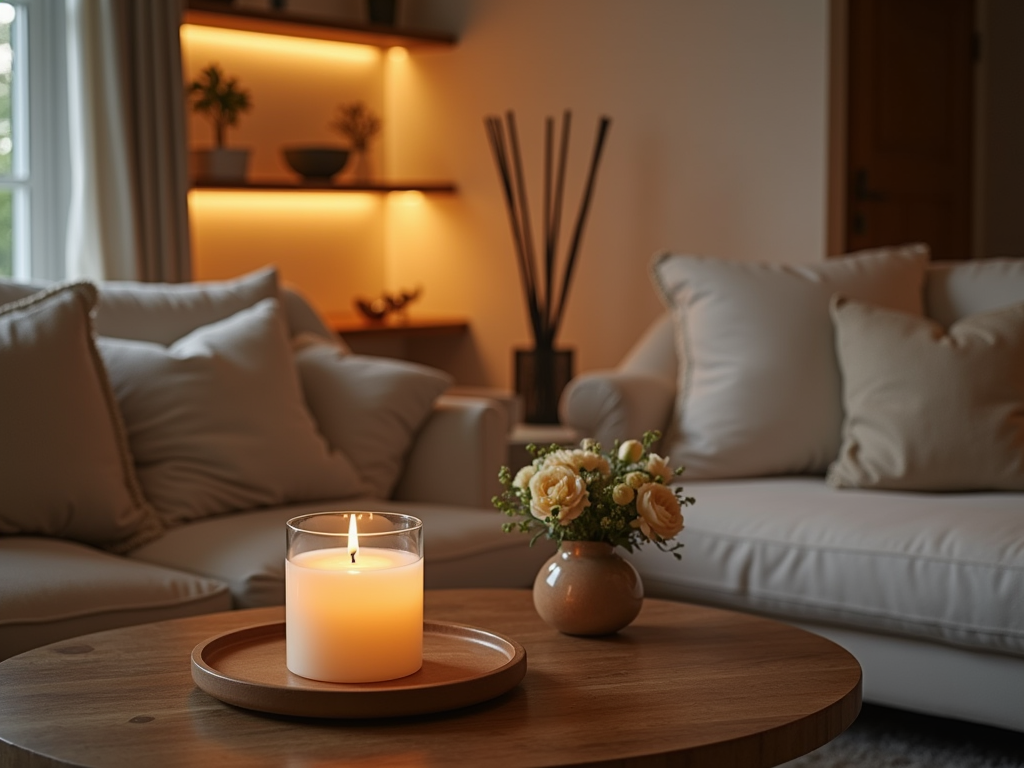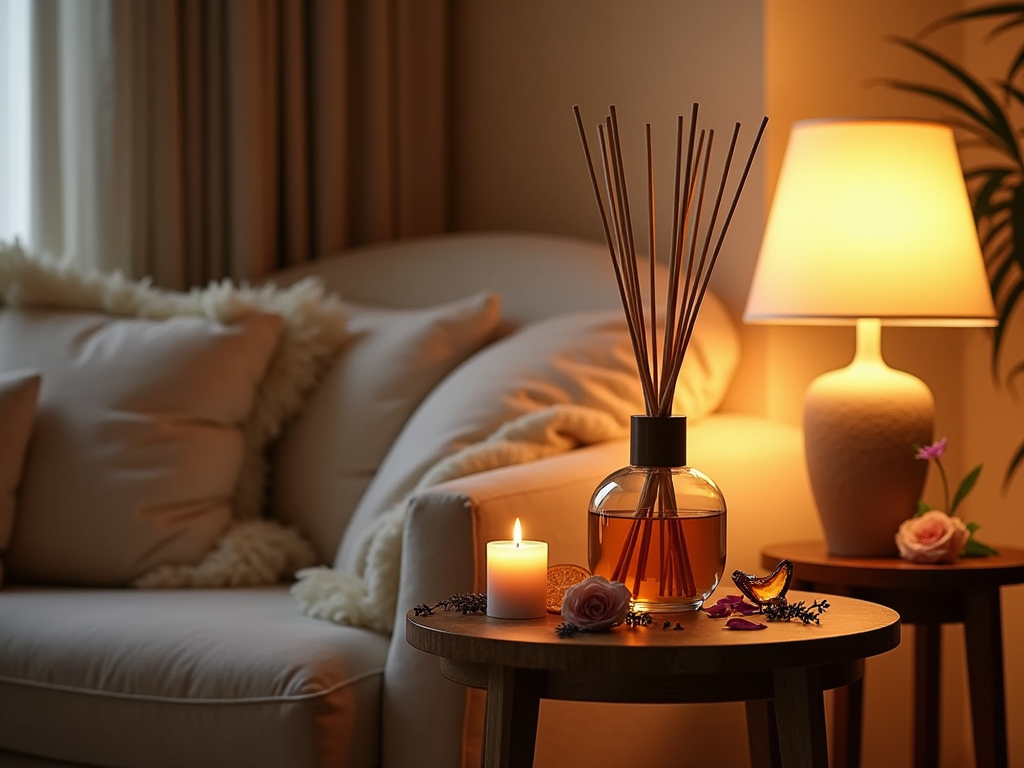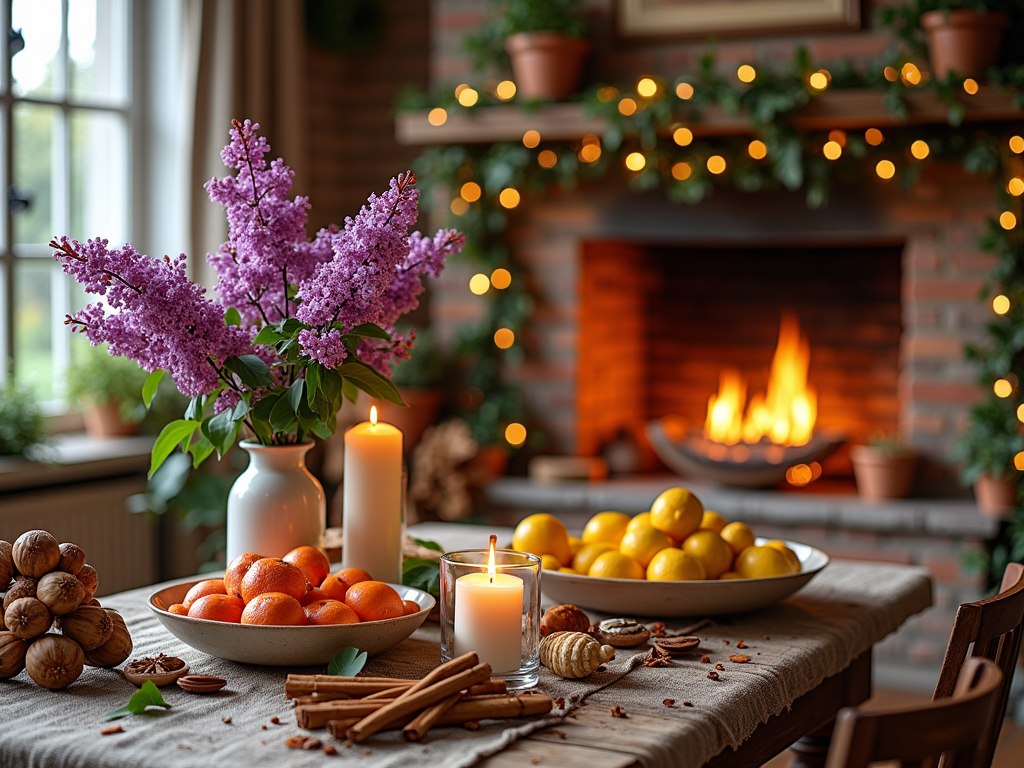
Selecting the best scent for your home means understanding how different fragrance profiles like floral, citrus, woody, and oriental can shape emotions and fit the role of each room. By aligning scents with room activities and picking the right diffusion method, you can craft an atmosphere that suits both your space and your emotional needs.
Key Takeaways
- Floral fragrances, including lavender and rose, work perfectly in bedrooms for their calming properties, while citrus options bring energy and focus to kitchens or work areas.
- Warm and grounding woody aromas, like sandalwood, suit smaller, cozy spaces, while oriental tones, such as amber, add elegance and richness to living areas.
- Candlelight glow, oil diffusers, or sprays each provide distinct scent outputs, ensuring the right match depending on the room’s purpose or its size.
- Blending seasonal or layered scents can transition your home’s mood through the year, creating unique combinations with complementary notes.
- Natural scent options deliver a cleaner, raw aroma, while synthetic choices balance cost-effectiveness with reliability, offering solutions to fit various preferences.
Choosing the right fragrance for your home starts with understanding scent families and how they impact mood and energy. Each scent family carries distinct emotional cues, shaping the atmosphere around you. Floral scents, like rose or jasmine, are known for their calming and romantic qualities, perfect for a cozy living space. Fresh scents, such as citrus or mint, infuse energy and brightness—ideal for a home office or kitchen.
Woody fragrances, like sandalwood or cedar, create a sense of grounding and warmth, making them a great choice for bedrooms or reading nooks. On the other hand, oriental notes—think vanilla or amber—deliver a rich, sensual vibe, often tied to luxury or relaxation. I’ve personally found lavender to work wonders in reducing stress in a busy household. The data backs it up; lavender has remained among the most popular choices for relaxation-focused aromatherapy.
If you’re hoping to spark creativity or openness, citrus scents like lemon or orange can work as mood enhancers.
Tips for Home Fragrance Application
- Use essential oil diffusers to instantly uplift energy in a communal area.
- Try scented candles or incense for longer-lasting effects.
- Blend different scent families to find a unique atmosphere that feels right for your space.
When paired with essential oil diffusers, citrus scents can have an instant effect. For a more subtle approach, I recommend trying scented candles or incense to layer your chosen fragrance. You can even explore tips for crafting your own scented candles if you want to personalize your space further.
Understanding how fragrance notes connect with emotions lets me refine how I use home fragrances, turning them into powerful tools for mood enhancement. Try blending different scent families until you land on one that feels just right.
Matching Scents to Each Room’s Purpose
Each room in your home has its own vibe, and the fragrance you choose can enhance it in amazing ways. I always recommend picking scents based on how you want the space to feel and what you’ll be doing there.
For kitchens, citrus scents like lemon or grapefruit work wonders. They’re bright and energizing, cutting through heavy cooking odors while uplifting your mood. Bedrooms, on the other hand, call for something calming. Lavender is a classic choice—it’s been linked to relaxation and better sleep. Sandalwood or chamomile are solid backup options if lavender isn’t your thing.
If you’ve got a dedicated workspace, you’ll want fragrances that help you stay sharp. Mint or eucalyptus can give a productivity boost and keep you feeling refreshed. Studies even suggest that peppermint increases focus, making it a smart addition to your desk setup.
Living areas often double as social spaces, so go with welcoming scents like vanilla or amber. These create a cozy and inviting atmosphere, ideal for gatherings or relaxing with a book. And bathrooms? Fresh and clean fragrances, like sea salt or green tea, work like a charm.
Finding the right pairing for each room doesn’t just transform your space—it shifts your mindset. If you’re thinking about exploring DIY options, it’s easy to learn how to make fragrance at home, giving you even more control over crafting scents that fit your lifestyle.

Scent throw, simply put, is how far a fragrance can spread in a given space. It’s key to picking the right product for enjoying your favorite aroma fully. Different types of home fragrance products—like candles, diffusers, and sprays—offer varying scent throws that can make or break the ambiance you’re after.
Candles, Diffusers, and Sprays: Choosing the Right Option
Candles are a top pick when you want a steady, moderate scent throw that gradually envelops the room. They work well for medium spaces like bedrooms or living areas. For larger, open-plan spaces, diffusers can be a better fit since their continuous scent dispersion offers a consistent yet still subtle fragrance. Sprays provide an instant hit of fragrance with a short scent throw that’s great for quickly refreshing smaller spaces, like an entryway or bathroom.
Considering Fragrance Intensity and Room Size
When deciding on fragrance intensity, consider room size and the vibe you want to create. A small space, like a bedroom, benefits from light, calming scents; a heavily scented product can overwhelm. Open areas, however, can handle stronger, more prominent fragrances without becoming overpowering. For this, an option like diffusers or larger candles works wonders.
Create Your Own Scented Experience
If you’re curious about creating your own signature experience, scented candles offer an excellent balance of throw and longevity. I’ve explored hands-on tips on how to make them in a dedicated guide here: how to make scented candles. It’s a fun way to ensure your home smells just the way you want.

Comparing Natural and Synthetic Fragrances
Natural fragrances, like essential oils or plant extracts, offer a more pure experience. They’re sourced directly from nature, giving them a clean aroma that many appreciate. However, the process of extracting these scents can strain resources. Growing plants for essential oils often demands large amounts of water and land, which raises concerns about sustainability.
On the other hand, synthetic fragrances, created in labs, provide consistent scents and are often more affordable. The downside is their potential to cause allergies, as some contain VOCs (volatile organic compounds) that might irritate sensitive individuals. If you’re concerned about allergens, look for options marketed as a “clean fragrance,” which may avoid certain harmful ingredients.
Interestingly, consumer trends sway both ways:
- Those prioritizing eco-consciousness lean on natural fragrances.
- Others favor synthetics for their affordability and reliability.
When deciding, understanding your home’s needs and health priorities can help. Explore how to fragrance your home naturally if you’re leaning green.

Scent Layering and Choosing Fragrance Combinations
Layering scents is an easy way to create a space that feels uniquely yours. It’s all about pairing different diffusion methods, like candles and reed diffusers, or ultrasonic diffusers with room sprays, to craft a cohesive ambiance. By overlapping complementary notes, the fragrance becomes richer and more immersive.
For a fresh and balanced atmosphere, match woodsy scents such as cedar or sandalwood with bright citrus notes like bergamot or grapefruit. Floral and herbal combinations, such as lavender with rose, bring a calming energy, while pairing vanilla with smoky tones can give a cozy warmth.
Each diffusion method offers a unique experience:
- Reed diffusers provide a steady, long-lasting scent.
- Ultrasonic diffusers add moisture alongside fragrance.
- Candles, with their soft glow, create a more intimate vibe.
If you’re curious about enhancing candles for a better fragrance impact, consider learning about making your own scented candles.

Seasonal Scents to Transform Your Home
Matching a home’s scent to the season makes every moment feel more intentional. Spring works beautifully with floral fragrances like gardenia or lilac, which bring freshness back indoors. As summer heats up, citrus scents—think lemon or grapefruit—keep things light and uplifting. In autumn, spices like cinnamon and clove complement cozy evenings and holiday preparations. Winter calls for woodsy, warm notes such as cedar or sandalwood, perfect for a comforting atmosphere during colder nights.
Seasonal scents don’t just enhance ambiance; they also amplify festive vibes. Imagine your home filled with pumpkin spice in autumn or rich evergreen scents in winter. Choosing your fragrance thoughtfully adds depth to everyday spaces.
You’ll find great options no matter the budget:
- If luxury is your go-to, brands like Bath & Body Works provide sophisticated blends that evoke seasonal feelings.
- For cost-effective choices, Yankee Candle’s seasonal lineup offers a variety of timeless fragrances at a mid-range price point.
- Febreze delivers affordable sprays and plug-ins that keep your home fresh without breaking the bank.
If you’re feeling crafty, you might enjoy learning how to make scented candles to personalize your seasonal smells. Making your own candles lets you design a signature fragrance for each time of year, with creative customizations suited to your style.

Sources:
Better Homes & Gardens
The Spruce
Good Housekeeping
Real Simple
Architectural Digest
Candle Science
National Candle Association
Fragrance Foundation
